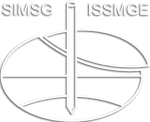Soil Water Retention Curves of Three Different Soils using Different Methods
Soil Water Retention Curves of Three Different Soils using Different Methods
The corrosion of metals in soils is a serious concern. To protect underground foundations, and steel and cast-iron pipes from corrosion, traditional galvanized coatings are not sufficiently effective in the long term. Alternative coatings, therefore, need to be evaluated. Soil wetness has been identified as a major influencing factor governing corrosion in soils. The optimal soil wetness for corrosion to be at its maximum rate is at its so-called air transition point, at which both the water and air phase, and their supply rate are continuous. This transition point is soil-dependent and can be derived from a soil water retention curve. The aim of this study is to determine the air transition point by determining water retention curves with the help of two commonly used methods. These were the filter paper method using Whatman No. 42 filters, a cheap and simple method widely used in geotechnics, and the modified evaporation method now becoming popular in soil science known as Hydraulic Property Analyzer (Hyprop). We used three test soils, an artificial soil (classified as sand), a natural loam, and a sandy loam. Soils were left untreated (non-compacted) and were compacted with a Proctor ASTM-698 to achieve preset densities. The highest dry densities obtained from the Proctor test were 2.070 g/cm3 for the sandy loam, 1.950 g/cm3 for the loam, and 1.51 g/cm3 for the artificial soil, at optimum water content (volumetric) of 11%, 18.4%, and 19.5%, respectively. While the soil water retention curves generated from both methods on the Proctor-compacted samples strongly resembled with each other from near saturation till residual wetness for all three soils, they did match much less for the non-compacted samples. The latter was due to differences in dry densities between the untreated soils.
KEY WORDS: Soil Water Retention Curve; Air Transition Point; optimum Moisture Content; Filter Paper Test; Hyprop
W. Akhtar; Gemmina Di Emidio; W. Cornelis; M. Khizar Khan; T. Paleman; B. Van Eeckhoudt; A. Decleene; J. De Strycker
9th International Congress on Environmental Geotechnics (ICEG2023)
Advances in Testing and Material Characterization
https://doi.org/10.53243/ICEG2023-68
